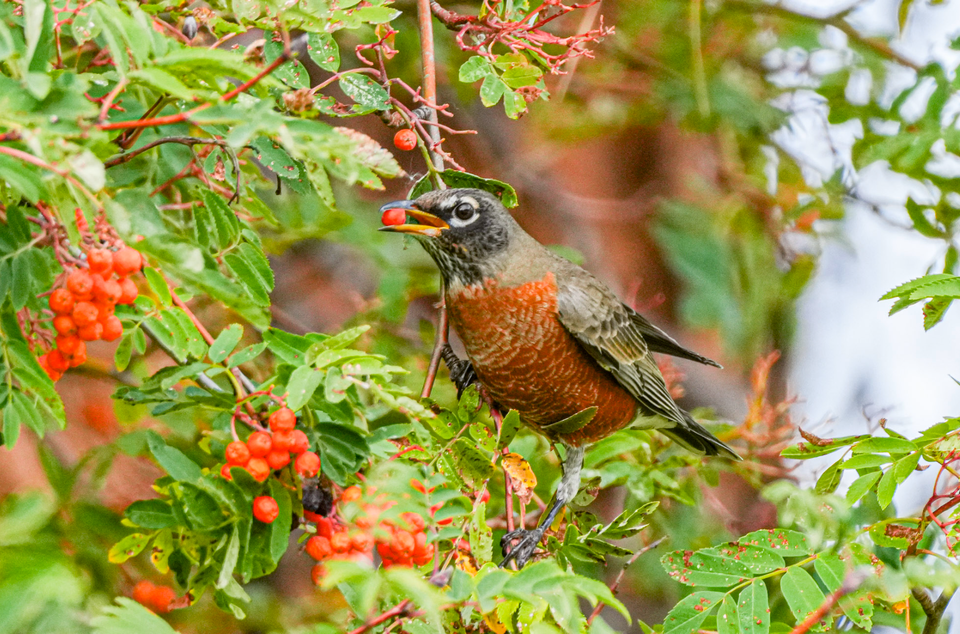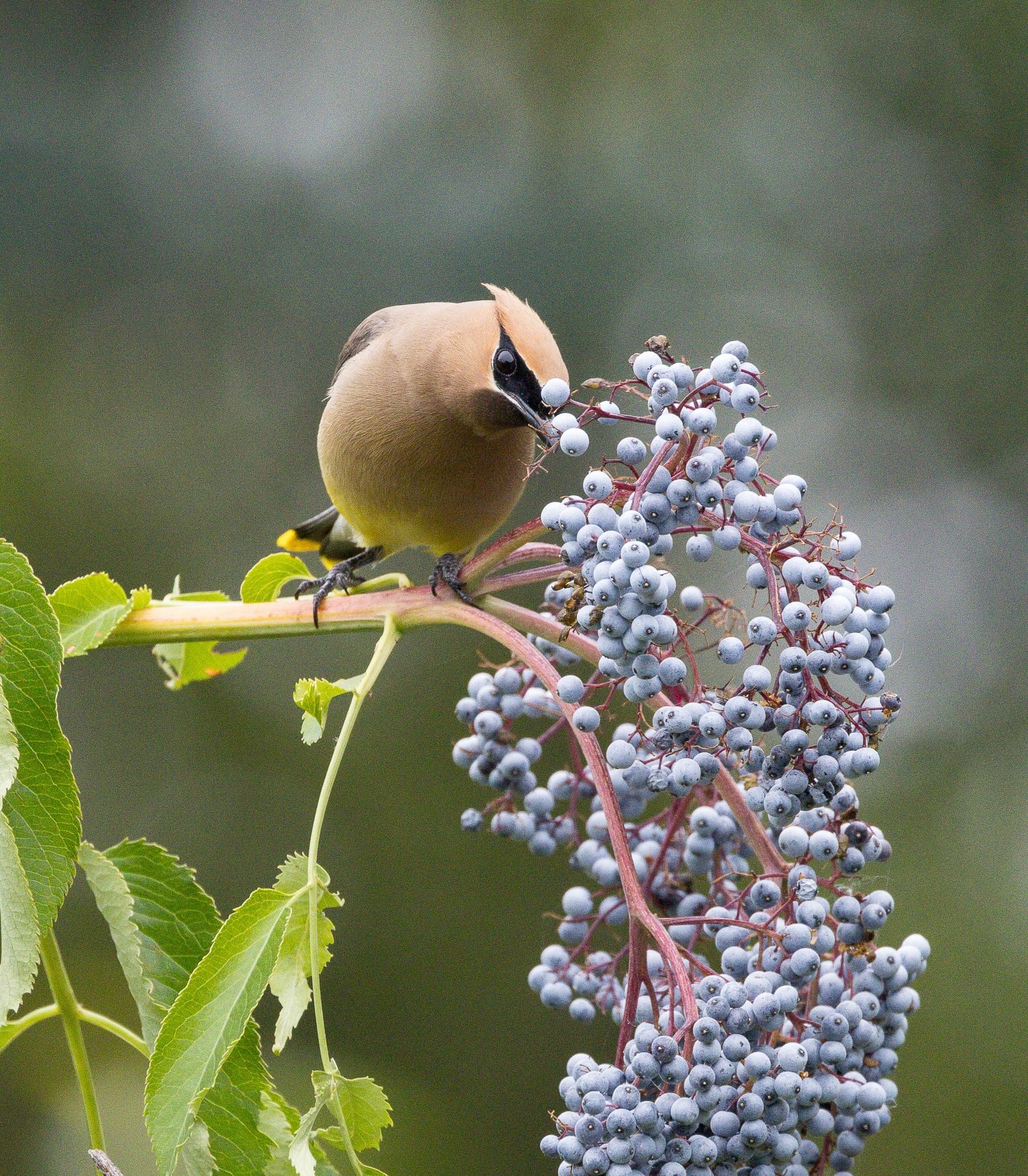Berry Berry Fat

Bird migrations are among the world's greatest physical feats—but how do birds that can weigh as little as two paper clips fuel flights that last for hours or days at a time?
As summer slides into winter, restless birds all over the world are undertaking migrations that might span thousands of miles and cross multiple continents. These journeys are formidable feats—just think of your own body and the hardships you would face if you ran continuously at full speed for 8, 12, 24, or more, hours!

Like all mammals you would, at the very least, become seriously dehydrated and run out of gas. But birds are unique in finding a way around these serious obstacles.

One of the primary issues for migrating birds is how to store enough energy for a long-distance flight. Energy can be stored as carbohydrates, proteins, or fats, but fat contains far less water (which is bulky and heavy) and provides two times more energy than carbohydrates and proteins so it's the best choice.

To this end, birds prepare for migration by packing on fat rather than carbs or proteins. They undergo what is known as hyperphagia (literally "overeating") as they boost the amount of food they eat by 25-30% and pack on 50% their body weight in fat. This fat is then stored inside a bird's muscles and internal organs and in thick pads of fat under its skin.

Fat may weigh a lot and be a burden for a migrating bird, but it also powers long-distance flights. Some shorebirds fly nonstop for 6000 miles, and even tiny hummingbirds can fly 500 miles, on the amount of fat they end up storing in their body.

Migrating birds also take advantage of another key feature of fat: when fat is broken down it releases a significant amount of water. In fact, when an animal metabolizes 100 grams of fat this process produces 107-110 grams of water—and this matters because it keeps a migrating bird from becoming dehydrated!

So how does all this relate to bird behavior that you can observe? As summer comes to an end, and birds prepare to migrate, they need to eat prodigious amounts of food. At the same time, insects have become much harder to find, and this means that birds can no longer find, chase, and capture enough insects to gain weight.

What you'll observe instead are birds switching over to a diet of berries and fruit that are abundant and easy to find through late summer and early fall. Furthermore, you might notice that birds are also selecting berries and fruits with the highest fat content (some fruits are 50-60% fat!). Their ability to choose among different options is so refined that they will only eat high-quality native plants and avoid the nonnative plants that are little more than nutritionally deficient "junk food."

Many of our common songbirds, including thrushes, warblers, and sparrows (as well as some shorebirds, ducks, and gulls), can be found gorging on fruits and berries at the end of summer. It's all a ploy to get as fat as possible for their long journeys ahead!

Member discussion